What do professionals do when concrete crumbles after winter?
Content:
- Why do monolithic structures need protection?
- Methods for protecting monolithic structures from destruction
- How can a concrete structure be treated if the process of crumbling and destruction has begun?
- Coatings not only for strengthening concrete, but also for giving a beautiful appearance
- Rules for applying protective compounds to concrete
There are many factors that influence the strength of the fill, and the surface begins to crack; such processes often become more active in spring and summer. And if you are not a builder and don’t know what to do when concrete crumbles after winter, I will suggest several methods that will stop the destruction process.
Why do monolithic structures need protection?
The main component of the solution - cement - has an alkaline base, which interacts with precipitation and ultraviolet rays, and the surface is also affected by wind and soil particles. All these negative factors destroy the structure of concrete, which makes it fragile and short-lived, so protection of monolithic structures must be carried out immediately after pouring.
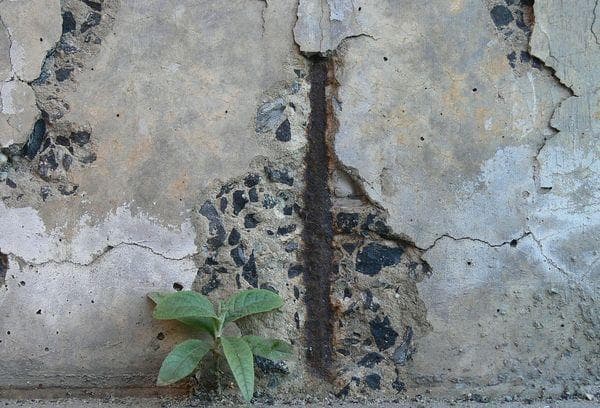
Probable causes of damage to the integrity of surfaces:
- Lime in the cement mortar is washed away under the influence of heavy precipitation, which forms small pores.Subsequently, these cavities are filled with water, which destroys the structure of the monolithic structure.
- Acids that are present in rain, snow and groundwater interact with the concrete base. This process forms efflorescence, which makes the monolith loose and brittle.
- Water, which tends to expand when freezing, gets into small cracks and pores, and begins to tear apart the concrete from the inside. After several stages of thawing and freezing, the structure of the monolith is severely damaged and requires strengthening.
- Destruction and crumbling can occur for natural reasons - shrinkage and soil movement.
- Insufficient compaction after pouring the mixture into the formwork, resulting in the formation of air cavities that reduce the strength of the structure.
- Poor quality cement and violation of the proportions of the components when mixing the mortar negatively affects the strength of the pour, and the concrete begins to crumble after the first winter.
This is a small part of the negative factors that can destroy a monolithic fill, but the main cause of crumbling is water. And in order not to make labor-intensive repairs during the operation of poured structures, it is necessary to take measures even at the construction stage.
Methods for protecting monolithic structures from destruction
Adding modifiers when mixing the solution will prevent premature crumbling and delamination of the filling elements. Silica increases strength and resistance to mechanical damage, and sulfates improve ductility, which contributes to less cracking. And also at the pouring stage, it is advisable to use reinforcement that guarantees the preservation of the shape of the structure during shrinkage and movement of the soil.
But if the problem has matured and the concrete crumbles after winter, then the surface must be immediately strengthened; for this there are several methods of protection, which are chosen based on the characteristics of the structure and its functions.
For example, if we are talking about the foundation, then a full range of surface waterproofing is done at the construction stage; small concrete forms in the form of fences or elements of architectural significance are better coated with compounds that do not change the appearance and color of the material. And also to protect monolithic structures from the effects of negative factors, there is a cladding that prevents moisture from entering and keeps the surface intact for much longer.
How can a concrete structure be treated if the process of crumbling and destruction has begun?
Modern manufacturers produce a large number of chemical coatings that are capable of deep penetration into the pores and cavities of monolithic structures and creating a durable protective layer.
Depending on the aesthetic component of the concrete element in the design of the site, you can choose a colorless composition or black mastic, so I suggest considering all material options.
Liquid waterproofing
It is used for both external and internal work, on poured floors, walls and foundations. The material increases the frost resistance of concrete and creates a film on the surface that prevents moisture from penetrating into the structure. Liquid compositions are made on the basis of epoxy and polyurethane resins, as well as organosilicon and acrylic compounds.
Coating waterproofing
It is used on surfaces that are used in difficult conditions, which include contact with groundwater and soil.Coating waterproofing is made in the form of a thick mastic that is applied to concrete. If we are talking about the foundation or external walls of the pool, which is covered with soil, then bitumen mastic is more often used.
The material is easily applied with a roller or brush and creates reliable protection against water, but the coating easily melts under the influence of ultraviolet radiation, so it is used only in places inaccessible to sunlight.
If you need to strengthen a concrete path, curb or blind area, it is better to use polymer mastic, which is resistant to ultraviolet radiation and mechanical damage. And if you purchase a multi-colored composition, you can not only protect the structure, but also decorate your area.
Liquid glass
A fairly inexpensive and effective composition that has long been familiar to builders. It is made on the basis of potassium and sodium silicates, which are able to penetrate deeply into the small pores of concrete, harden and create a reliable coating, which prevents the penetration of water into the structure. The composition is sold ready-made and has no color, which allows you to paint the concrete later.
Liquid rubber
An alternative to polymer mastic. Sold in the form of two components, which must be mixed immediately before application to the surface. But there is also a composition called rubber paint. The liquid coating is already ready for use, which simplifies the work. Rubber-based paint has different colors, and the coating can have not only a protective, but also a decorative function.
After application, any of the compositions creates an elastic layer on concrete that is not subject to mechanical damage, temperature changes and the influence of humidity.
Deep penetration primer
The composition is always used if the concrete structure will be painted or covered. The primer is made in the form of a liquid solution, often antiseptics are added to it, which prevent the occurrence of breeding grounds for microorganisms and fungi. The liquid composition is capable of penetrating several centimeters deep into the structure and creating a durable film on the surface that prevents the absorption of moisture.
Coatings not only for strengthening concrete, but also for giving a beautiful appearance
Treatment of monolithic structures, of course, is necessary, but you also want the cement path, platform or foundation to look beautiful. In addition to painting surfaces, you can cover a concrete structure with decorative compounds that will bring aesthetic appeal and provide additional protection against the influence of external negative factors.
If processing of curbs, paths or platforms is necessary, then pay attention to a seamless rubber coating. The composition is made on the basis of polymers with the addition of rubber crumbs in different colors. This coating will additionally strengthen the concrete base and also prevent slipping on a wet surface.
To protect the base and walls, decorative plaster is used, which is produced in different colors and textures. Popular finishes include “fur coat”, “bark beetle” and lamb. Plaster is made on the basis of cement, acrylic and polymer, which determines the cost of the material. The simplest and most affordable finish will be a cement-sand mixture, which you can make yourself.
Rules for applying protective compounds to concrete
If the coating material for concrete structures has been determined, then before applying it to the surface it must be prepared, otherwise money and time will be wasted.
The main thing you need to know is that surface treatment should be done at above-zero temperatures and preferably when there is no rain outside, so that the coating has time to absorb properly.
Stages of preparing concrete structures before coating with protective compounds:
- We clean up the crumbling areas. A wire brush or coarse sandpaper will do.
- Remove any remaining dust with an aqueous solution using a rag or brush. Let the surface dry for several hours.
- If strong potholes and deep cracks have formed in the concrete, they must be covered with cement-sand mortar.
- We apply protective agents with a roller or brush; for large volumes of work, you can use a spray bottle.
When applying the compositions, it is important to carefully read the instructions and technology for carrying out the work; for example, primer and liquid glass must be applied twice with a break for drying. Also, such compositions can be toxic, so respiratory and eye protection must be worn when applying.
In conclusion, as a builder with extensive experience, let me give you advice: you should not skimp on protective compounds. Repairing concrete structures is a tedious procedure, and if the destruction process is not stopped, then it will be necessary to carry out complete dismantling and re-fill, which will cost much more than purchasing a coating.
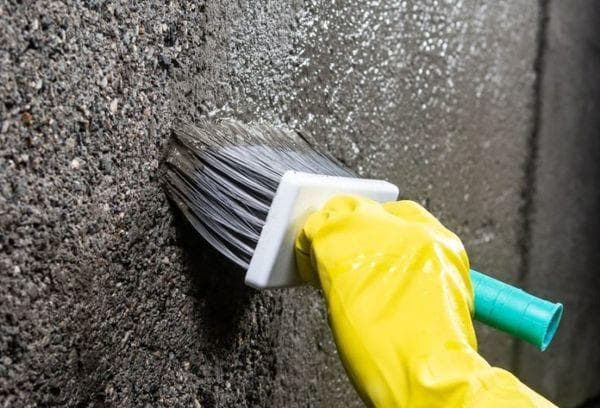
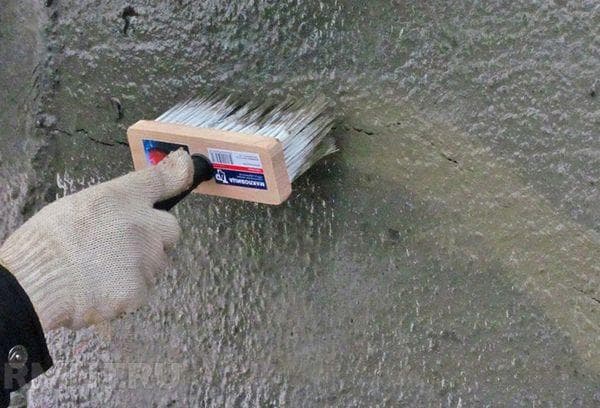
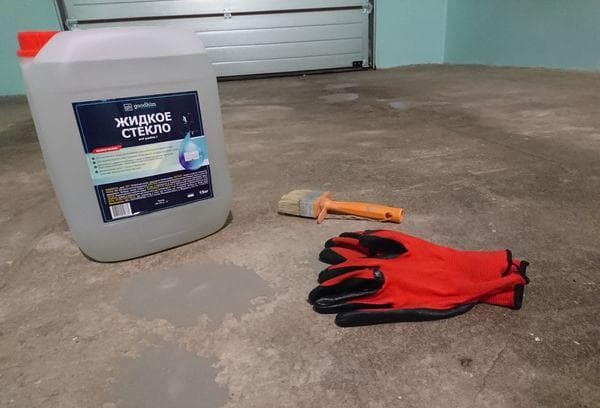
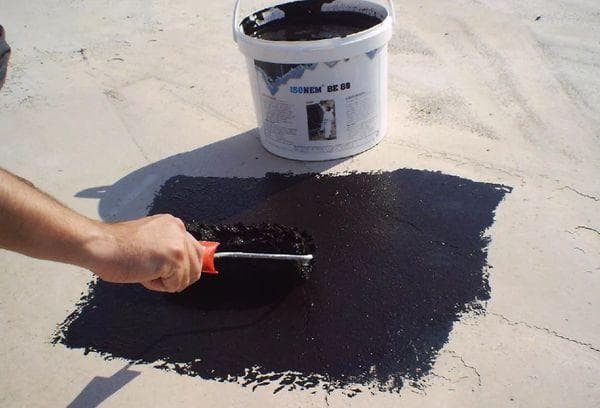
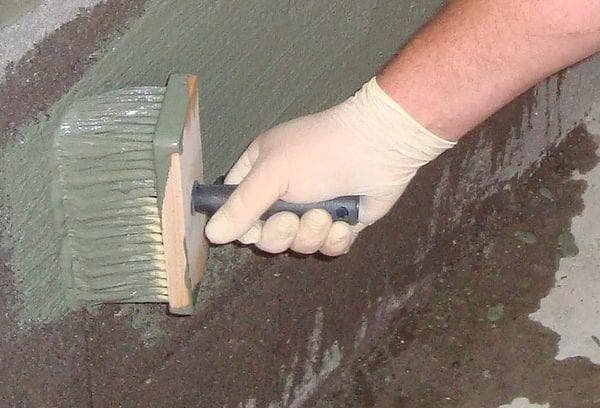
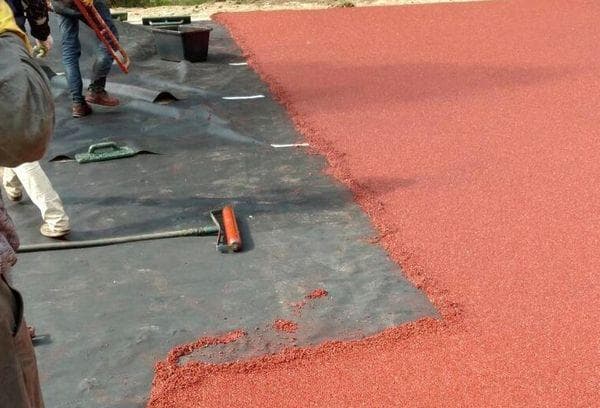
The concrete foundation of a country house began to crumble after the winter. It looks like the deadline is already approaching. But I didn’t plan to do any repairs in the near future. I bought liquid glass and processed everything as written in the article. Looks like it fixed the concrete.